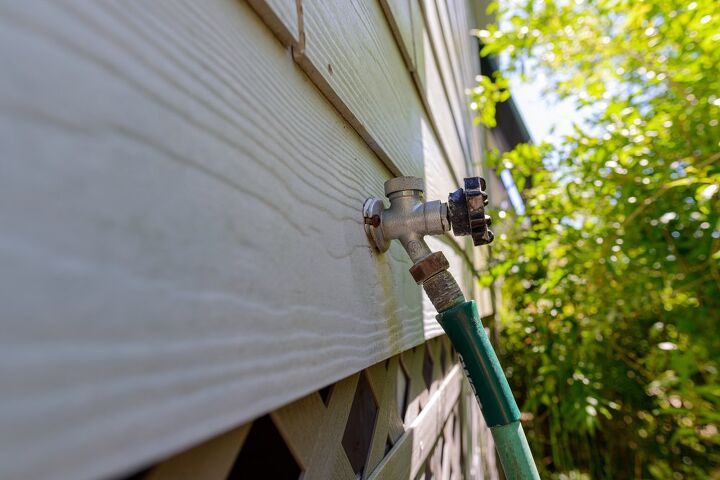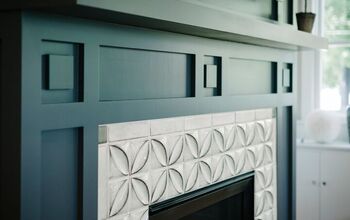Do You Need To Cover Outside Faucets?

Depending on where you live, you may find that your outdoor faucets require extra maintenance and care. Certain occasions and temperatures will require you to take extra precautions. But do you need to cover your outside faucets in the winter?
You should cover and protect your outdoor faucets when the temperature drops below 30 degrees Fahrenheit. But covering your faucet doesn’t necessarily protect your pipes, so letting faucets drip can work better in certain situations. Insulating and supporting faucets is also helpful. Knowing what covers to buy and what homemade materials you can use will save you and your pipes from freezing.
Covering your faucets may be a seasonal step you are used to, depending on where you live. But if you don’t live somewhere particularly frigid, you likely won’t need to keep your faucets undercover often.
At What Temperature Do You Need to Cover Outside Faucets?
Typically when the temperature tends to dip in certain states and areas, you will want to cover your faucets. If the temperature drops anywhere below 28 degrees, your pipes are likely to freeze. Even pipes or hoses will tend to freeze and burst at 30 or below.
If you do not cover your faucets, another option may be to let your faucets drip. If the water is trapped in your pipes and the temperature dips, the water freezes and expands. This expansion can cause all your pipes to burst, break, or form weak spots causing future problems.
Is It Better to Cover Outside Faucets or Let Them Drip?
Some consider this a matter of personal choice, but the Red Cross suggests letting faucets drip. If you leave your faucets on a slow drip, it keeps the water moving in the pipes. This constant flow prevents ice from forming and can help protect your pipes from freezing.
Covering can prevent your faucets from freezing, but it is no guarantee for your pipes. If the temperature is below the 28-degree threshold, you may have a problem either way. Letting your faucets drip may just save you in the long run.
Why Is Covering Outside Faucets Necessary?
Most faucet covers use one of two styles, a thermal foam, or they are similar to flexible insulated bags. If you install them properly, they seal tightly around the base of the faucet. But either style provides good insurance against your faucet or pipes rupturing and can be very necessary.
Faucet covers work by trapping heat that naturally radiates through the interior pipes in your home. The insulated cover prevents the heat from escaping. Therefore, water in the faucet doesn’t freeze, expand, or rupture within the faucet.
Cover Outside Faucets to Prevent Freezing Pipes
Your pipes or faucet freezing usually happens in the wintertime when the temperature drops below 28. When pipes freeze, this can cause damage to your pipes, and come spring, you may have leaks. This may also cause you to lose water flow to your home or low water pressure.
Cover Outside Faucets to Prevent Expanding Pipes
If you do not cover your faucets, you will find that your pipes may expand. In the winter, metal pipes contract due to the lack of heat, and water, when frozen, expands. This can cause your pipes to be under great strain as the season proceeds.
Avoid Ruptured Pipes
In a worst-case scenario, if you do not cover your faucets, you may face your pipes rupturing. This can cause you great stress and cost you big money. Ruptured, frozen pipes can happen anywhere between your home and sink pipes to the outdoor faucets.
This problem will need a professional plumber to fix it and will potentially leave you without water.
Do You Have to Cover Frost-Free Faucets?
You should still cover frost-free faucets because, although they are resistant to freezing, they are not completely frost-proof. Even in the coldest weather, the rubber gaskets and washers inside the frost-free faucet will benefit from the extra protection. The additional protection will also guarantee that your faucet will not freeze.
It is a simple fix of $10-$20 versus spending hundreds or thousands of dollars in damages. Be careful not to be overconfident in a faucet you believe will outlast winter and snowy weather.
What Is the Best Way to Cover Outside Faucets?
Outdoor faucet covers come in several different styles and designs. Many companies list covers under several names, including “garden faucet insulation cover” or “bib cover socks.”
Therefore, finding one is easy. But you will find all of them will do the same job, even if they are listed under different names.
For best results, the covers need to seal tightly to provide the best thermal protection against the cold. Here are some links to some of Amazon’s top covers, from plastic ones to a style used for faucet and hose bibs. After finding the perfect faucet cover for you, follow these steps to ensure your covers are installed right.
1. Disconnect All Hoses
No matter the outdoor faucet type, freeze-proof or not, it is very important to remove any hoses. Not removing hoses can trap water and make it much more likely a faucet will freeze.
2. Inspect Your Faucets
Check all faucets for leaks and drips. If you find any problems, repair or replace the fixture before the temperature drops. Also, you will want to drain all faucets and pipes to ensure they are ready for the covers.
3. Install Outdoor Faucet Covers
The last step to winterizing outdoor faucets is to protect them with insulation. An easy way to do this is to install an outdoor faucet cover on each outdoor fixture, including frost-free faucets.
DIY Ways to Insulate Outside Faucets
There are other ways to cover your faucets if you are in a bind or the freeze comes earlier than expected. You can make your own covers or even try some oldie but goodie techniques. You can make a cover by using things you find around your home.
1. Plastic Styrofoam Cups
You can make a DIY faucet cover in a hurry if you have something similar to a styrofoam cup. You will stack 2-3 cups inside one another, cutting ridges or holes out for the faucet or knob. You can then place the cups over your faucet and secure them with tape or rope.
For added measure, you can line the cups with cloth or tissues to help with insulation. Keeping the warmth in is key, and making your own can be tricky but not impossible.
2. Wrapping a Towel Around the Faucet
This may seem like an easy solution, but it can be effective. If the freeze comes on hard and quick, grab some towels. You can take a few towels and washcloths and secure them around your faucets.
You will want to secure them with rope or rubber bands, and you may have to use more than one towel. Making sure that the towel is not wet or your faucet is dripping will ensure your towels hold heat.
3. Gloves and Newspaper
You can pretty much take anything that holds heat and turn it into a faucet cover. You can use an old pair of work gloves or winter gloves, stuff them with newspaper and make a cover. This may fall under homemade, but it works all the same.
Newspaper is a natural insulator, and the gloves will help add extra support during the nights ahead. Using what you have on hand can save you in the future or at least give you a fighting chance.
A Final Look at Why You Need to Cover Outside Faucets
By understanding that you may need faucet covers where you live, you can save yourself a lot in future expenses. Faucet covers help to prevent your outdoor faucets and pipes from freezing. You should seriously consider buying faucet covers if the temperature drops below 28 degrees.
To prevent your pipes from freezing, expanding, and rupturing, you will want to buy a cover that suits you. You can find various options at your local home improvement store and on Amazon. Be sure to look for the covers under different names if you do not find the one you prefer.
You can always make your own faucet cover if the freeze comes early and you are short on time to get one. Use various items around your house, like styrofoam cups or towels, to protect your faucets when you’re in a pinch.

Stacy Randall is a wife, mother, and freelance writer from NOLA that has always had a love for DIY projects, home organization, and making spaces beautiful. Together with her husband, she has been spending the last several years lovingly renovating her grandparent's former home, making it their own and learning a lot about life along the way.
More by Stacy Randall



























